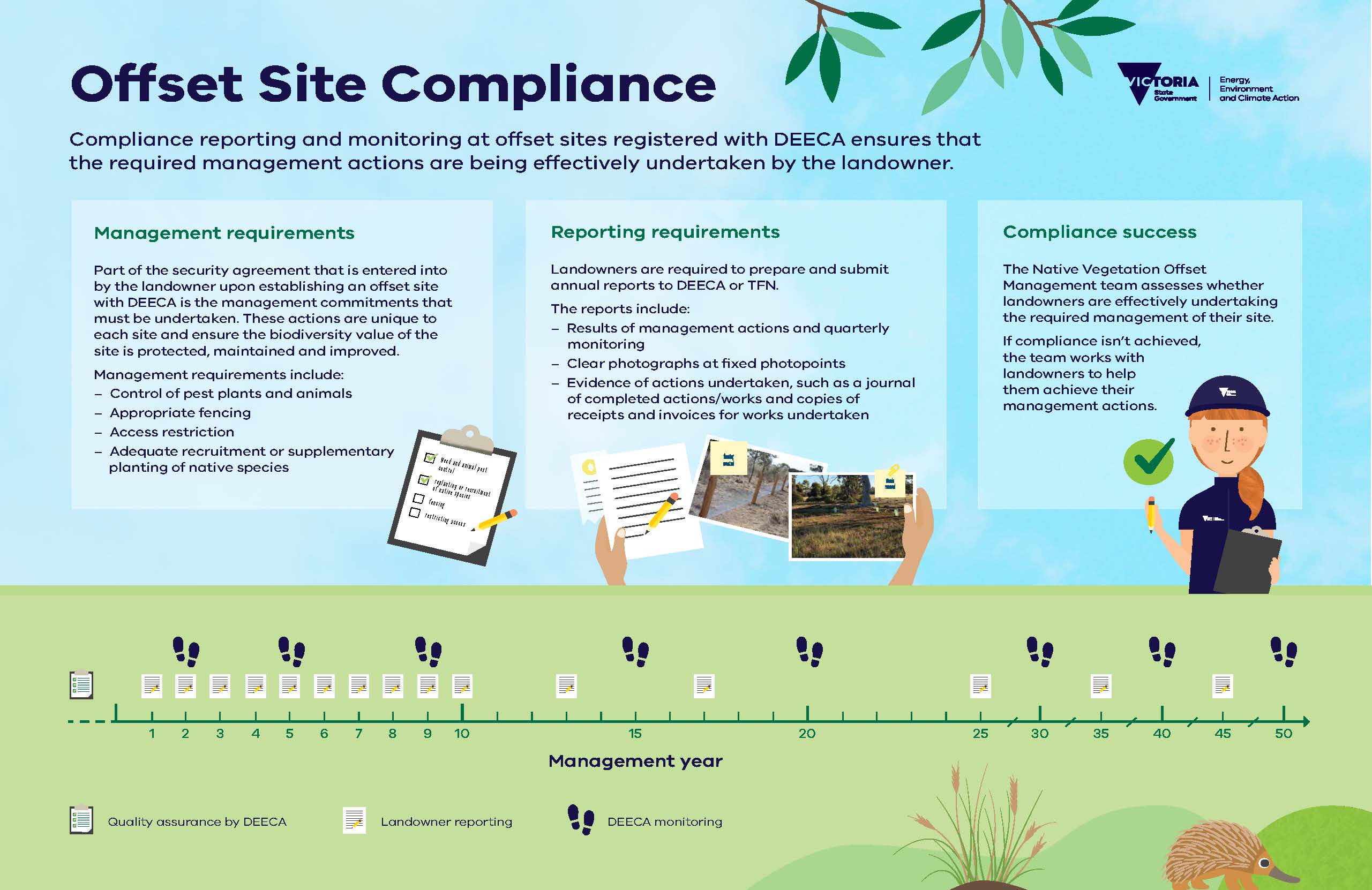Third party offset site owners can:
- sell native vegetation credits to people with approval to remove native vegetation, or
- use them to meet their own offset requirement due to an approval to remove native vegetation.
To manage and protect native vegetation on your own land to meet your own offset requirements, visit: Securing an offset.
There are costs associated with establishing third party offset sites. DEECA has a list of service providers that can help you understand your obligations and opportunities. These are:
- site assessors who will help you assess your site and establish the offset site and
- brokers who can help you trade (sell) native vegetation credits.
A summary about how to establish a third party offset site: Process to establish a native vegetation credit site on private land (PDF, 24.5 KB).
Current fees for transactions completed through the Native Vegetation Offset Register: Native Vegetation Offset Register Table of Fees.
First steps
Before you start, talk with one or more site assessors to help you understand:
- if your proposed offset site meets all eligibility requirements
- what your land management and reporting obligations will be into the future (refer to the Management standards for native vegetation offset sites (PDF, 1.9 MB) for more details)
- the estimated native vegetation credits available at your site, and
- the likely costs of ongoing offset management.
Also talk with one or more brokers to help you understand:
- native vegetation credit trading
- how the market operates, and
- the potential for trading native vegetation credits.
A list of Native Vegetation Credit Register registered brokers and site assessors: Native Vegetation Credit Register registered brokers and site assessors (PDF, 143.3 KB).
All trading and allocation of native vegetation credits in Victoria must be done so in line with the Rules of the Native Vegetation Credit Register: Rules of the Native Vegetation Credit Register (PDF, 679.3 KB).
Next steps
To establish a third party offset site you will need to contact a Native Vegetation Credit Register site assessor. The assessor will conduct a site assessment and take you through the process to establish the site.
Once the site is established and you have native vegetation credits, contact one or more brokers to list the credits. The brokers assist to match your credits with potential buyers.
Security agreements
Registered on-title security agreements for third party offset sites are either:
- a Trust for Nature offset covenant under the Conservation Trust Act 1972, or
- a section 69 agreement under the Conservation, Forests and Lands Act 1987 (DEECA).
Both types of security agreement must meet DEECA offset site standards. Offset sites under Trust for Nature offset covenants have some different requirements and fees. Contact Trust for Nature for more information.
IMPORTANT! The management obligations and commitments start as soon as all parties have signed the security agreement. This is regardless of whether any trades have occurred.
There is an option for landowners to complete the site assessment and list potential credits available at the offset site. Once a prospective buyer has been identified, the landowner can complete the offset site establishment process and start trading.
Native Vegetation Credit Site: What happens beyond the initial ten years? Beyond ten years infosheet
How to price native vegetation credits
The following information sheet will help landowners work out how to set a unit price: Pricing native vegetation credits (PDF, 259.4 KB)
Landowners can also look at the details of previous trades. (Tip: if the latest version of the spreadsheet doesn't open in Microsoft Edge, try using Google Chrome): Native Vegetation Credit Register traded credits information- (Excel, 3.1 MB)
The roles and responsibilities in offset site establishment
DEECA has created a series of information sheets to explain the requirements of brokers, credit owners, credit purchasers, site assessors and DEECA within offset site establishment.
Roles and Responsibilities of:
Page last updated: 05/11/25
